Trending
Opinion: How will Project 2025 impact game developers?
The Heritage Foundation's manifesto for the possible next administration could do great harm to many, including large portions of the game development community.

Featured Blog | This community-written post highlights the best of what the game industry has to offer. Read more like it on the Game Developer Blogs or learn how to Submit Your Own Blog Post
This article examines the utility of kinetic and chromatic unpredictability in the game music of Jurassic World Primal Ops (from Winifred Phillips’ highly-rated GDC 2023 lecture, “Chaos Theory in Game Music.”)

By Winifred Phillips | Contact | Follow
Hey everybody! I’m video game composer Winifred Phillips, and I’m happy to welcome you to the fifth installment in this series of articles based on my Game Developers Conference 2023 lecture, “Chaos Theory: The Music of Jurassic World Primal Ops.” I’ve included the content of my GDC lecture in these articles, accompanied by all of the included videos, sound files, and many of the illustrations from my GDC 2023 conference presentation.
During the previous four articles in this series, we learned about Jurassic World Primal Ops – the latest video game in the popular Jurassic Park / Jurassic World franchise. We discussed how the strategy for this game’s musical style was driven by the concept of Chaos Theory. This chaos-inspired musical composition philosophy attempts to increase tension through the use of some of the most unpredictable composition techniques, employing these unconventional strategies in the effort to create subversive and disturbing effects.

By devising a musical style that avoided a conventional structure, the music of Jurassic World Primal Ops was able to support and sustain emotional unbalance during lengthy action sequences. You’ll find these unconventional techniques discussed in detail in these four articles:
Part One: Tonic Pivot (The Music of Jurassic World Primal Ops: GDC 2023)
Part Two: Quartal Chords and Chromatics (The Music of Jurassic World Primal Ops: GDC 2023)
Part Three: Whole Tone and Octatonic Scales (The Music of Jurassic World Primal Ops: GDC 2023)
Part Four: Polytonality (The Music of Jurassic World Primal Ops: GDC 2023)
We just concluded our discussion of the role that polytonality played in the musical score of Jurassic World Primal Ops. Polytonality is an uncommon musical device that helps us to break away from harmonic conventionalism. But harmony is just a piece of the puzzle, and it certainly isn’t the only way we can introduce chaos into our game scores.
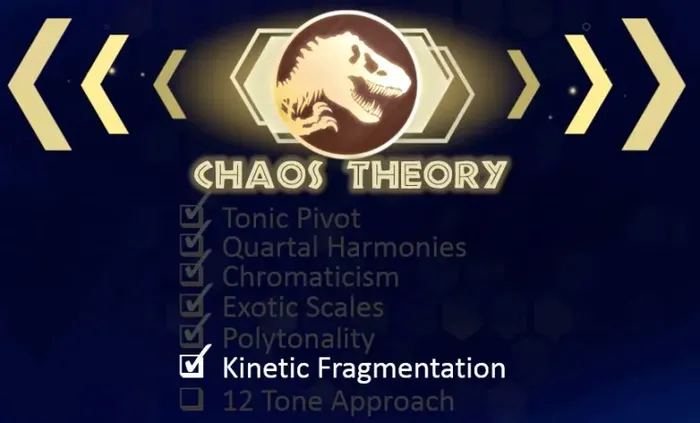
At this point, let’s shift from our discussion of harmonies, and talk now about kinetics.
Energy in music is typically driven by tempo and meter, which give us a sense of momentum. There are lots of ways we can experiment with unusual meter structures. For instance, in that polytonal piece of music we discussed in the previous article, there are also abrupt, temporary changes in meter that make things feel agitated and unstable.

The time signature moves from triple meter, to a single measure of common time, then back to triple meter, then to a single measure with 5 beats of irregular time, then back to triple meter again. Let’s listen to that:
While meter changes can keep our music feeling on edge, they’re not our only tool. Kinetics addresses not only general momentum, but also the energy of sudden movement. In an interview for Total Film Magazine, composer John Williams addressed the awesome importance of musical kinetics in his scores for the first and second films from the famous Jurassic franchise, describing how he had to “match the rhythmic gyrations of the dinosaurs.”
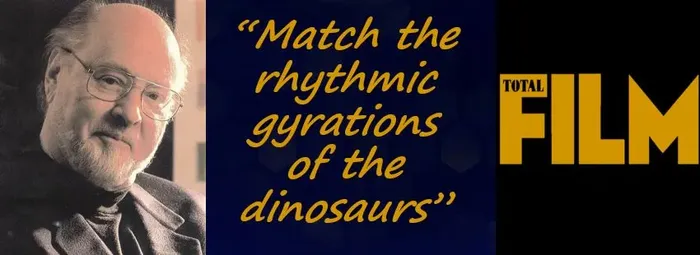
As a composer for a Jurassic World game, I knew it wouldn’t be possible for me to exactly match the rhythmic gyrations of the dinosaurs. However, I could best simulate that effect by employing a technique that I’ll be calling ‘kinetic fragmentation.” Let’s discuss that idea.
In traditional composition, bursts of movement can be achieved with classical ornamentation, such as trills, runs, repetitions, glissandi, hits, flourishes, crescendos, gestures, and other techniques that inject abrupt vigorous impact into our music.
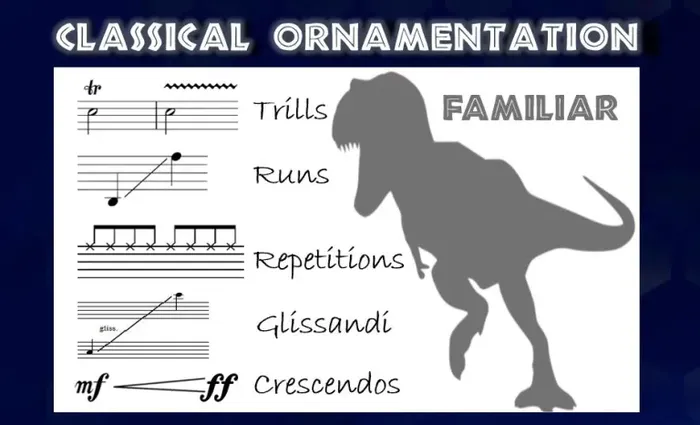
But those are also familiar sounds, and this talk is about pushing our music towards the unfamiliar.
Classic ornaments are well organized, performed with expert discipline and in accordance with traditional harmonics. Chaotic ornamentation, on the other hand, is unruly, performed with abandon, and often-incorporates atonal or polytonal qualities.
I treated all of these techniques as ‘kinetic fragments’ that could be injected into my compositions and cause disruptive impact. These kinetic fragments were great at making the music seem as if it had been structured specifically so that it would conform to the movements in the game. They enhanced both excitement and menace during gameplay – they were the musical equivalent of fireworks, or bolts of lightning.

So let’s check out an example of kinetic fragmentation in a combat track I composed for Jurassic World Primal Ops. You’ll hear lots of big orchestral hits in tight clusters, anxious brass repetitions, hectic woodwind runs in multiple opposing scales, forceful trills and flourishes, all coming together to add chaos to the kinetics of the game:
In that lead piano we just heard, there’s another useful technique that injects more atonality into the music. Let’s briefly discuss it.
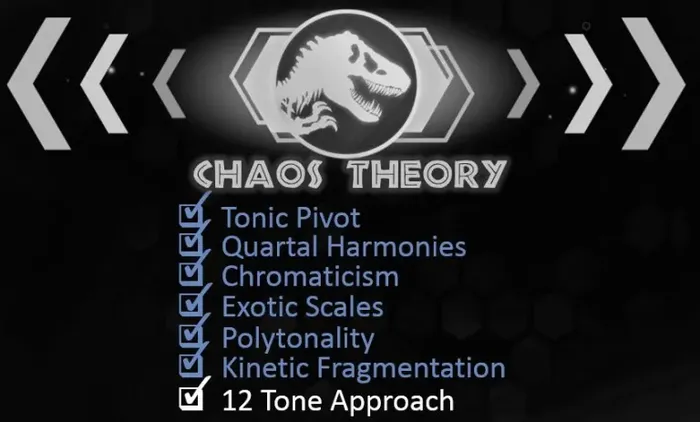
As you might have noticed, the lead piano line was heavily inspired by the 12-tone approach, so let’s check that out.
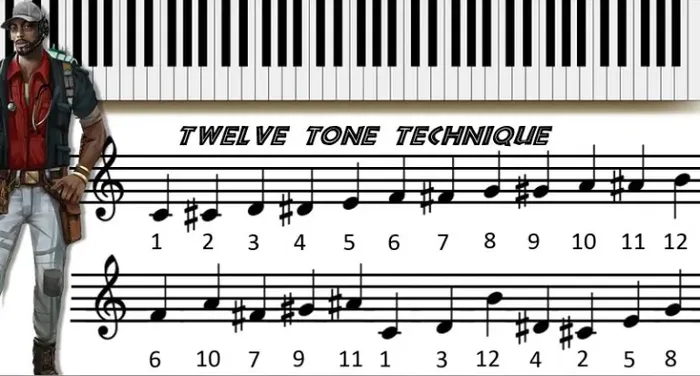
We start with all the tones of the chromatic scale:
But then we avoid any sense of key signature or harmonic center by sounding all of those 12 notes in an apparently scattered arrangement:
Using a 12 Tone approach makes our lead lines unpredictable; so let’s check out another example! Here’s some exploration music. Notice the 12-tone influence in the marimba part:
In the sixth and final article of this series, we’ll be stepping back from our granular analysis of top techniques from music theory to consider the significance of musical context, and the vital importance of creating contrast within our scores. In the meantime, you can read more about game music composition in my book, A Composer’s Guide to Game Music. Thanks for reading!
.webp?width=700&auto=webp&quality=80&disable=upscale)

Winifred Phillips is a BAFTA-nominated video game composer. The music she composed for her latest video game project Jurassic World Primal Ops won both the Global Music Award and the NYX Award, and was nominated for a Society of Composers & Lyricists Award for Outstanding Score for Interactive Media, and a Game Audio Network Guild Award in the category of Music of the Year. Other recent releases include the hit PlayStation 5 launch title Sackboy: A Big Adventure (soundtrack album now available). Popular music from Phillips’ award-winning Assassin’s Creed Liberation score was featured in the performance repertoire of the Assassin’s Creed Symphony World Tour, which made its Paris debut with an 80-piece orchestra and choir. As an accomplished video game composer, Phillips is best known for composing music for games in many of the most famous and popular franchises in gaming: the list includes Assassin’s Creed, God of War, Total War, The Sims, and Sackboy / LittleBigPlanet. Phillips’ has received numerous awards, including an Interactive Achievement Award / D.I.C.E. Award from the Academy of Interactive Arts and Sciences, six Game Audio Network Guild Awards (including Music of the Year), and four Hollywood Music in Media Awards. She is the author of the award-winning bestseller A COMPOSER’S GUIDE TO GAME MUSIC, published by the MIT Press. As one of the foremost authorities on music for interactive entertainment, Winifred Phillips has given lectures at the Library of Congress in Washington DC, the Society of Composers and Lyricists, the Game Developers Conference, the Audio Engineering Society, and many more. Phillips’ enthusiastic fans showered her with questions during a Reddit Ask-Me-Anything session that went viral, hit the Reddit front page, received 14.9 thousand upvotes, and became one of the most popular gaming AMAs ever hosted on Reddit. An interview with her has been published as a part of the Routledge text, Women’s Music for the Screen: Diverse Narratives in Sound, which collects the viewpoints of the most esteemed female composers in film, television, and games. Follow her on Twitter, Facebook, Instagram, and Threads.
You May Also Like